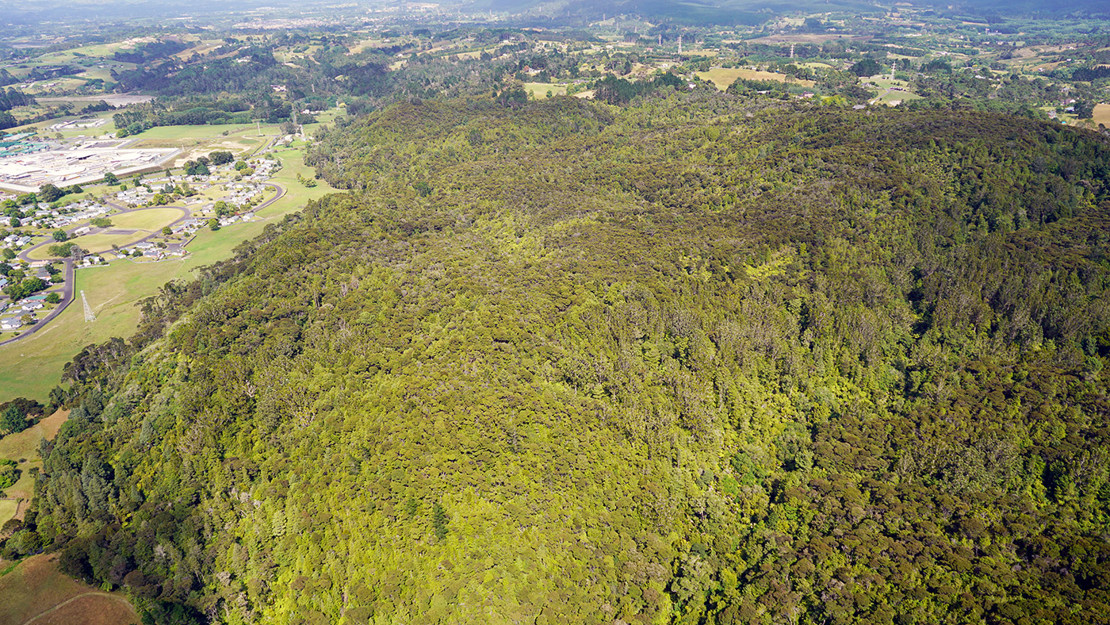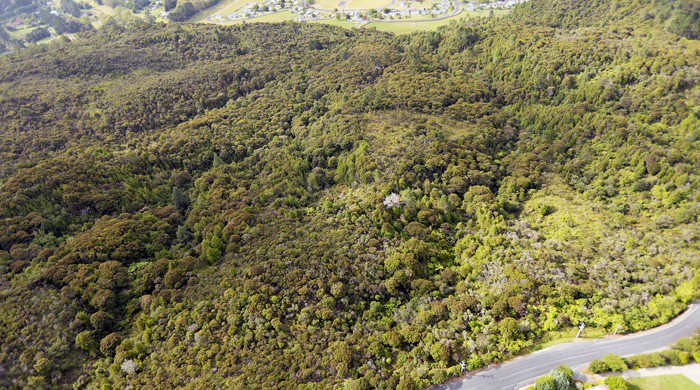Paremoremo Scenic Reserve
Size: 102 hectares
Site description and location
Paremoremo Scenic Reserve is the largest forest and scrub-covered reserve on the North Shore. It is located at the northern end of the North Shore and is administered by Auckland Council.
Native vegetation covers steep, south-facing hillslopes from the ridgeline to Paremoremo Creek. This creek flows through a narrow floodplain at the base of the reserve and includes a series of rapids. The creek becomes tidal downstream as it flows into an estuarine inlet of the upper Waitematā Harbour.

Key ecosystems
Kauri, podocarp, broadleaved, beech forest (WL12) covers a steep sided valley at the eastern end of the reserve as well as the lower hillslopes of Paremoremo Creek. Hard beech is also common on spurs.
Kauri dieback, a soil-borne pathogen capable of killing kauri trees of all ages, is present in the reserve. Public access is restricted to prevent the further spread of this pathogen.
There is a small patch of Kahikatea forest (MF4) on a low-lying terrace next to Paremoremo Creek. Kahikatea are common here, along with occasional tawa, tītoki, nīkau and supplejack. Kahikatea forest is ranked as regionally critically endangered.
Mānuka and stunted kānuka dominated gumland scrub (WL1.2) covers the ridges and high plateau. Other plant species often associated with gumlands found here include:
- prickly mingimingi
- gumland grass tree
- kūmarahou.
Gumlands were once much more widespread but frequent fires, clearance for urban development, weed invasion and other factors have irreversibly altered many of the original gumlands. The loss of gumland areas means this ecosystem type has a regional threat ranking of critically endangered.

Habitat values
The large area of forest and scrub within the reserve and the freshwater streams provide important habitat for many threatened and common native animals.
A diverse range of native forest birds, native lizard species and several native freshwater fish species are present in this biodiversity focus area.



